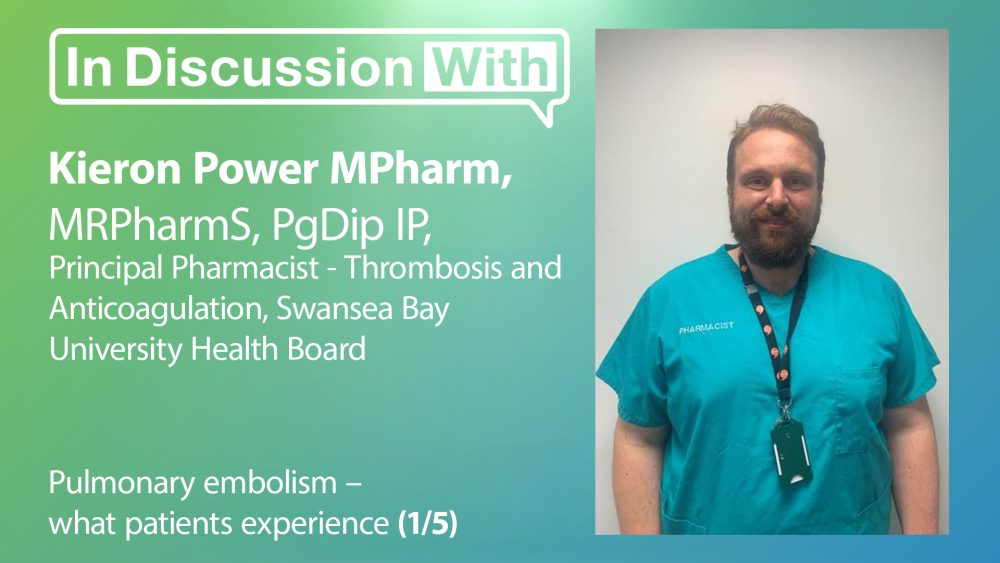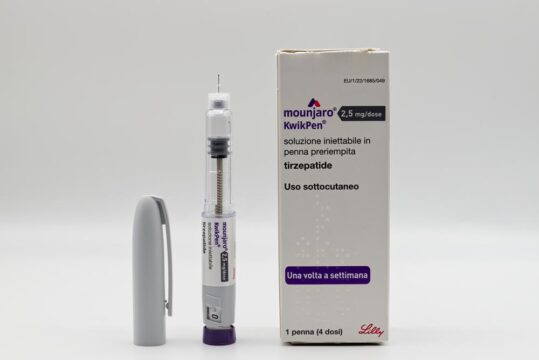Advertisment
Pulmonary embolism – what patients experience

Kieron Power is Principal Pharmacist for Thrombosis and Anticoagulation in Swansea Bay University Health Board in South Wales. He has played a leading role in the development of an outpatient pulmonary embolism pathway that has positively impacted the service and the patient experience. IMI spoke to Mr Power to find out more.
The two most common forms of venous thromboembolism (VTE) are deep vein thrombosis (DVT) and pulmonary embolism (PE). A pulmonary embolism occurs when a thrombus (clot), usually formed in deep leg vein, travels to the lungs and causes a blockage in the pulmonary blood circulation. This then leads to pressure developing in the pulmonary circulation. “DVT and PE are actually pathologically similar which is why fundamentally we treat them in the same way, long term, but PE is actually the most serious consequence of VT and has a mortality aspect to it so that’s the condition which people would likely fear more”, explains Mr Power.
In the UK, about 39 to 115 per 100,000 of the population each year will develop a PE and the mortality rate can be up to 30%. However, “what we’ve started to realise in recent times is that not all PEs are the same and actually there’s distinct groups within that bracket”, he says. Some patients present with high-risk PEs, where large thrombi have occluded large vessels, resulting on raised pressure in the right side of the heart and possible haemodynamic instability. Such patients are critically unwell, require hospital admission and may be considered for high-risk procedures such as thrombolysis. “At the other end of the spectrum you get patients with much smaller emboli, which developed within some of the peripheral blood vessels, who may not need that urgent level of care and may actually present with slightly more vague symptoms – often things like pleuritic chest pain – and may well have presented first to their GP, for example, and been treated for things like chest infections”. When there is no improvement on antibiotic treatment such patients may be investigated for PE. “Actually, what we’ve seen is that we shouldn’t consider PE to be one entity – there are different risk groups within that that condition”, he emphasises.
Patients tend to be self-selecting when they experience a pulmonary embolism. Those with large emboli where there is considerable strain on the right ventricle often present with syncope, collapse or significant symptoms of shortness of breath. They will call 999 or present to an Accident and Emergency department and are likely to require hospital admission. They are also likely to be considered for thrombolysis. “We know that thrombolysis has good evidence in terms of reducing mortality but with an associated bleeding risk, so those patients are mainly reviewed by senior clinicians who specialize in acute medicine”, says Mr Power. Typically, they will they receive parenteral anticoagulants before being discharged on an oral anticoagulant once they recover and stabilise.
Patients with lower-risk pulmonary emboli experience milder symptoms and often present to their GP practices. They may be referred to a Same-Day Emergency Care unit (SDEC) where they can be assessed, undergo an urgent computed tomography pulmonary angiogram (CTPA) and then be managed as outpatients.
About Kieron Power
Kieron Power is Principal Pharmacist for Thrombosis and Anticoagulation in Swansea Bay University Health Board in South Wales. His role comprises three elements:
- Thrombosis and Anticoagulation Lead for the health board – a governance role that involves leading on policy and guidance within the Health Board and performance monitoring for hospital-acquired thrombosis rates, venous thromboembolism risk assessments and general anticoagulation prescribing factors.
- Running a weekly thrombosis and anticoagulation specialist clinic on behalf of the consultant haematologists.
- Leading and running the pharmacist-led acute VTE service and follow-up service that operate within the health board
Read and watch the full series on our website or on YouTube.
This episode of ‘In Discussion With’ is also on Spotify. Listen to the full podcast now.





